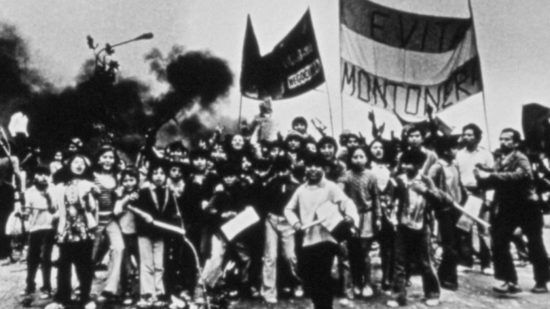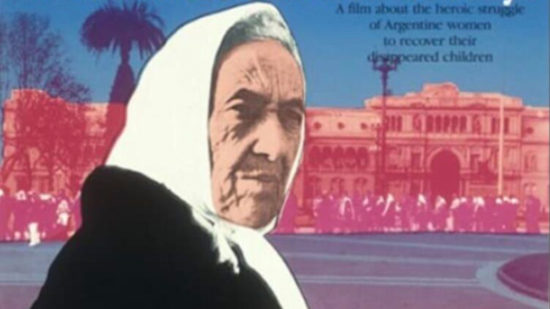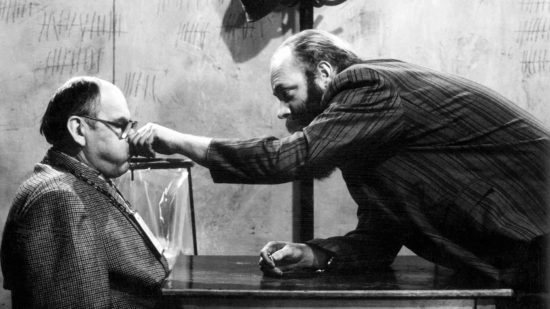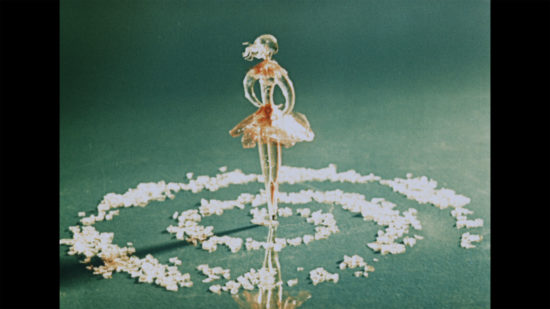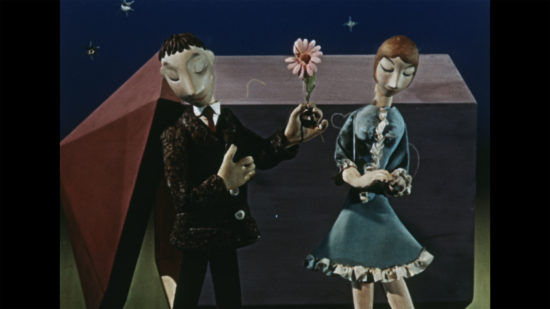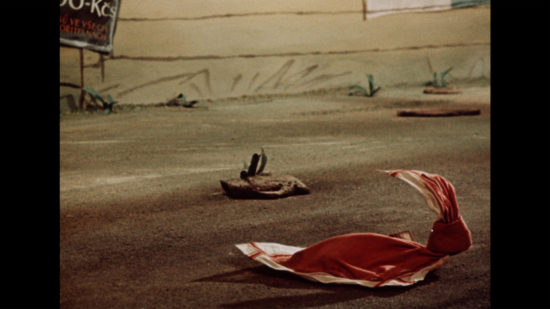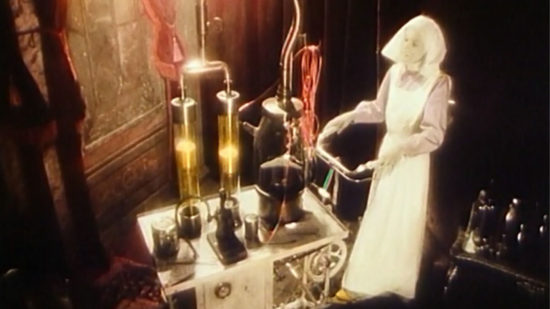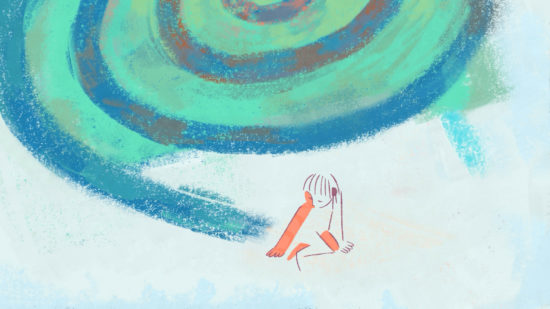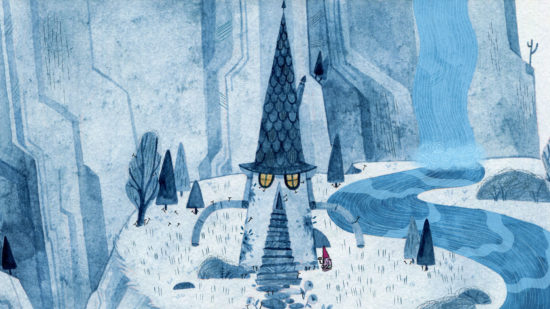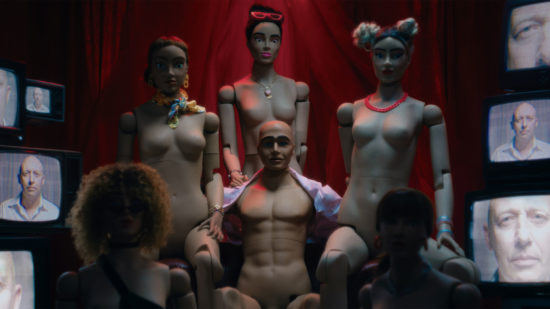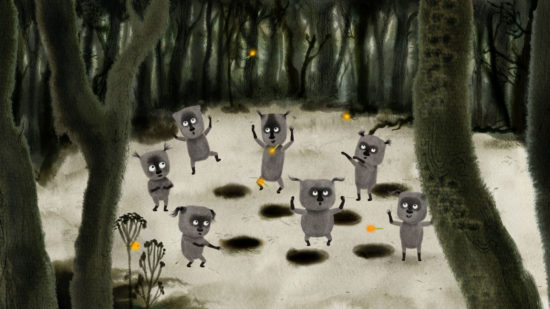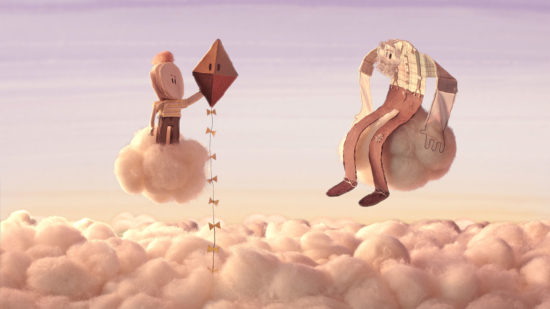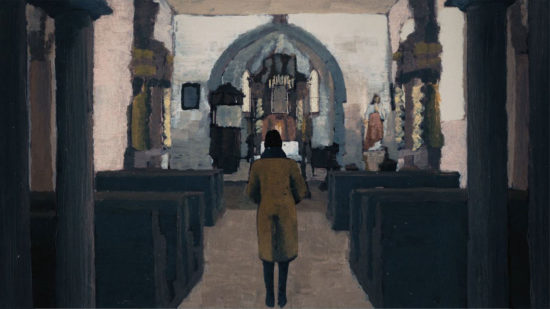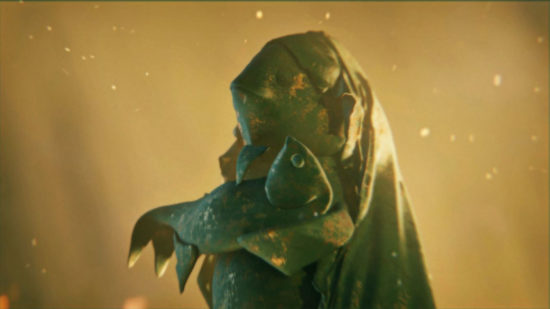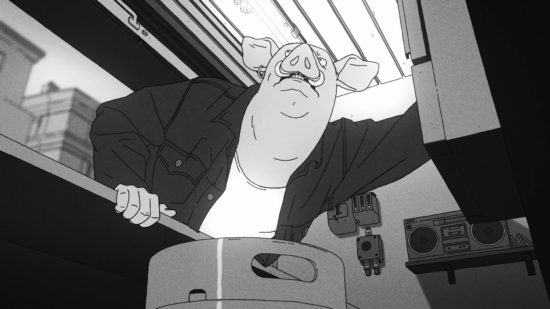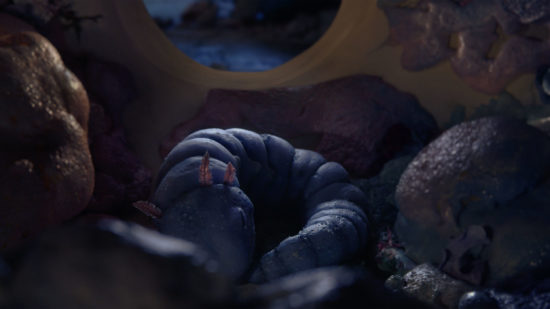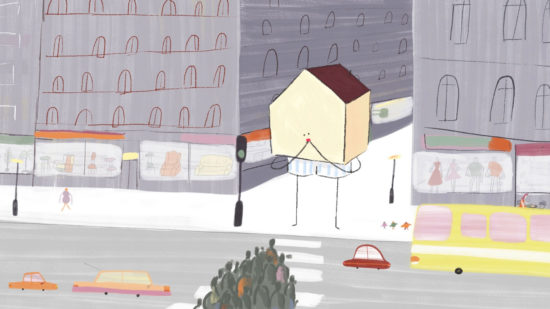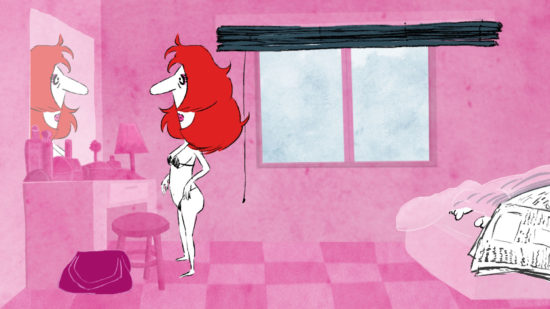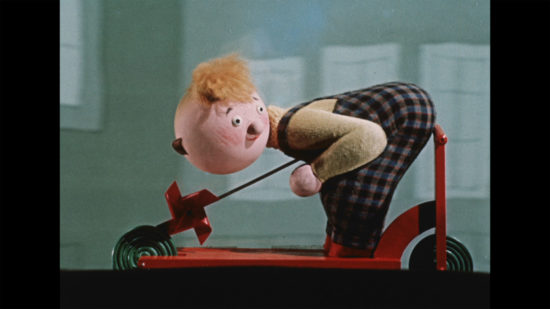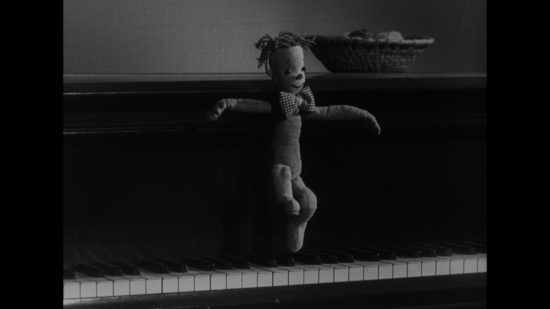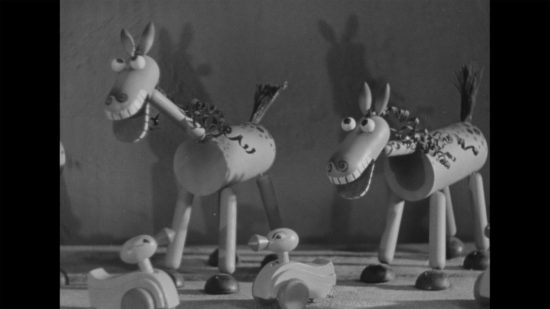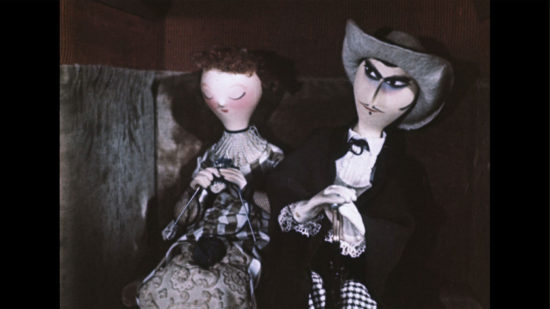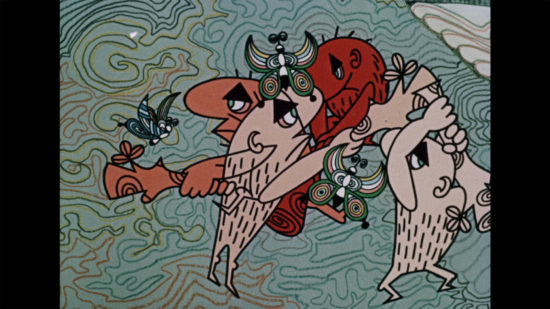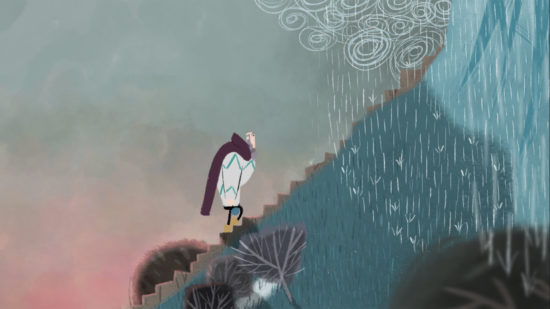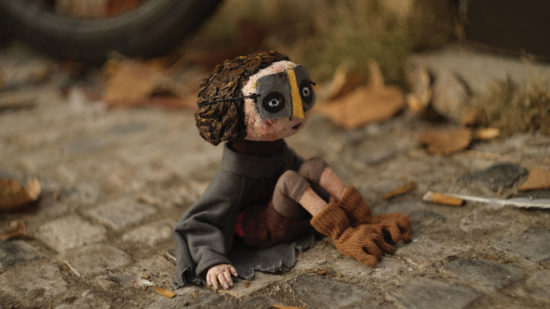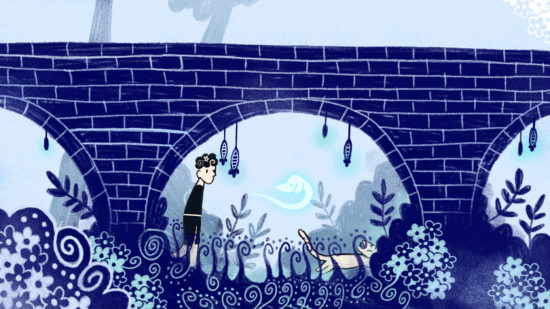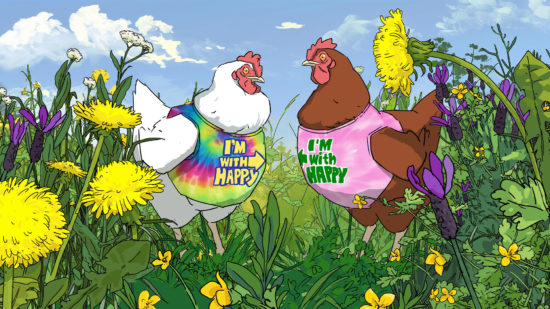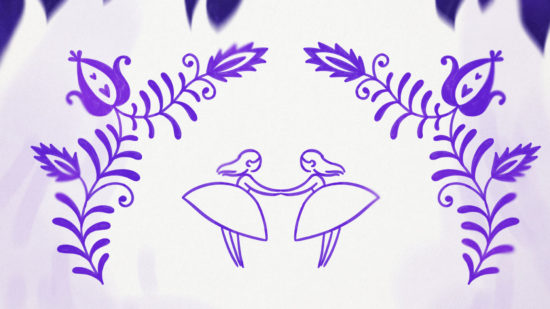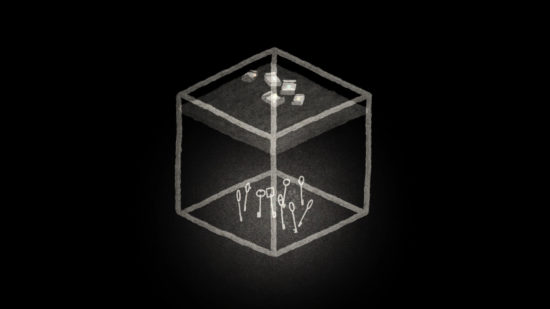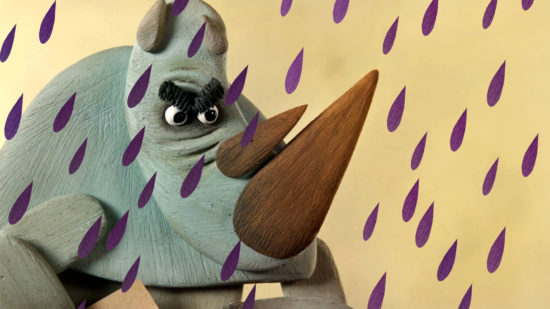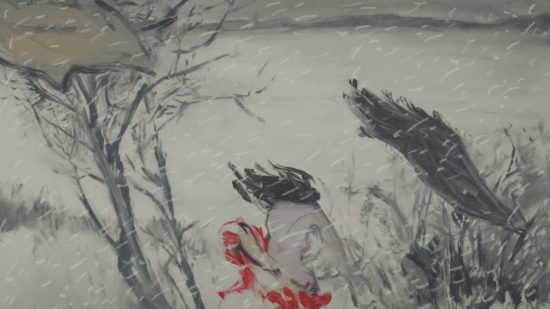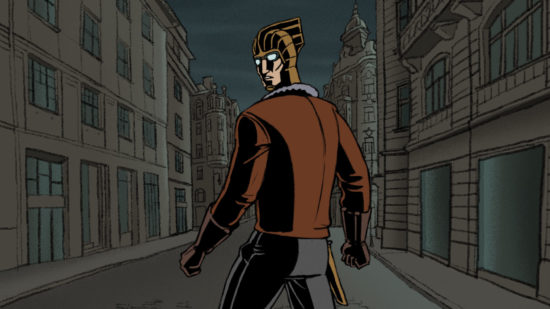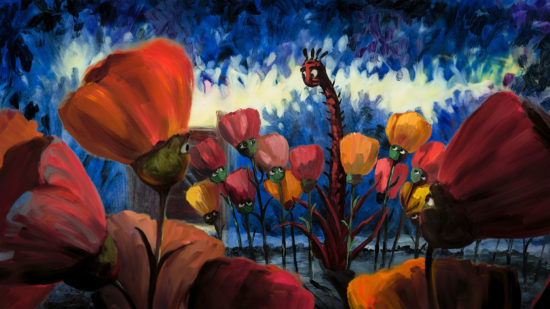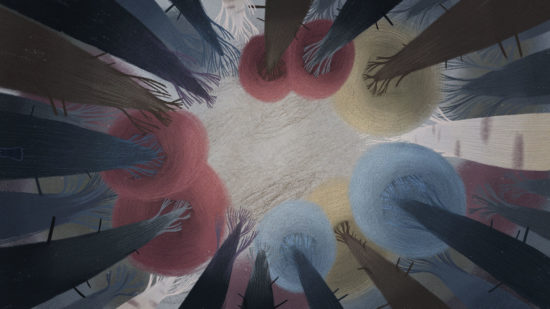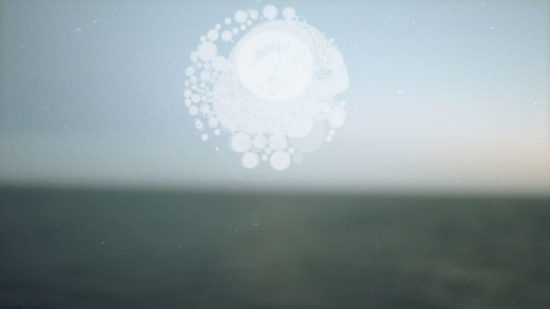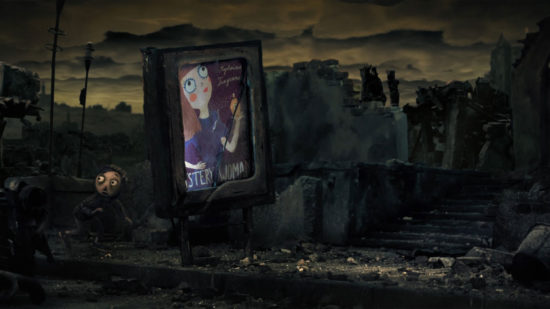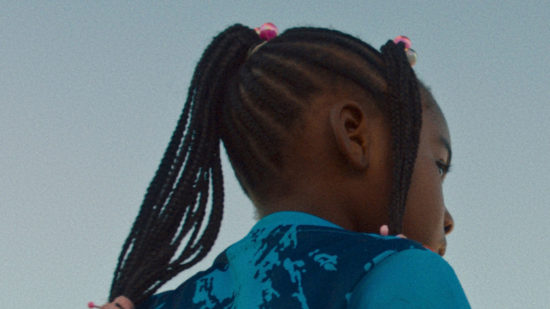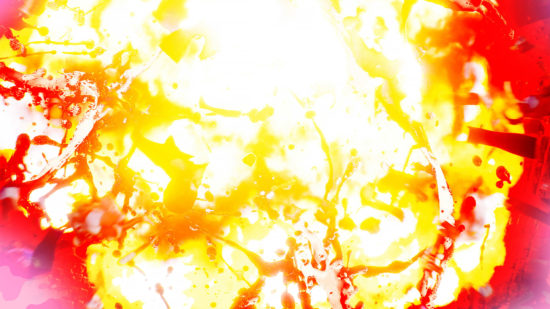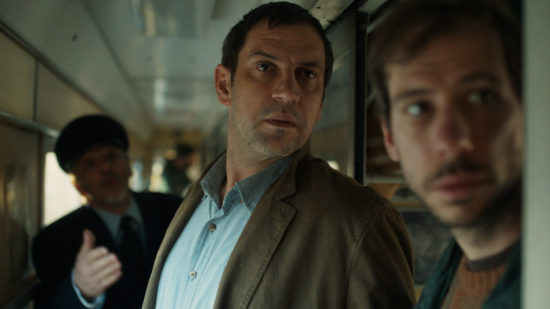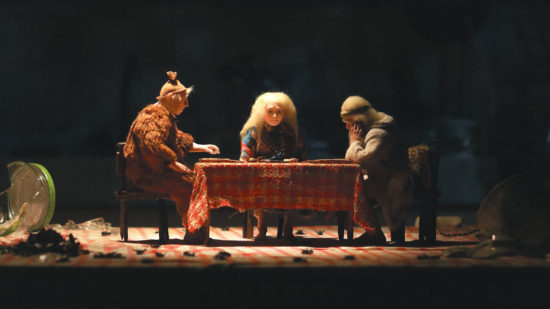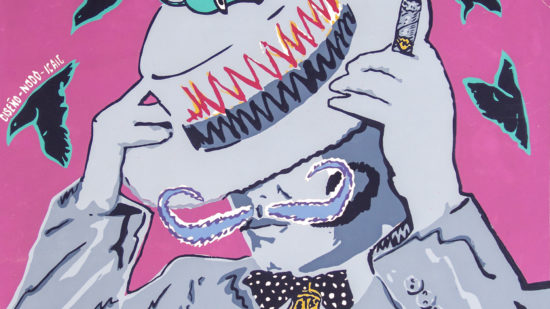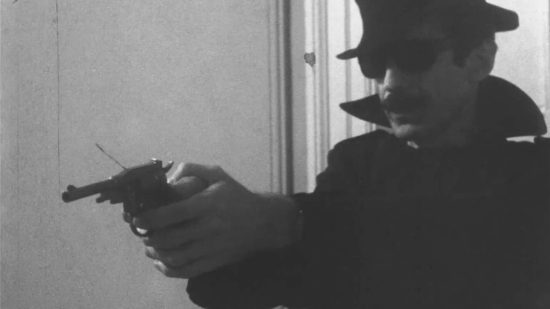


Based on a letter from activist Lili Massaferro to an American friend, narrated in voice-over, and using archival material from various Argentine media outlets, the film recounts Lili’s personal story and her political commitment, intertwined with Argentina’s own history: Peronism and the figure of Evita, the death of her son Manolo, and the Peronist feminist movement of the 1970s.
Documentary that captures the testimony of the Mothers of Plaza de Mayo, whose children were detained and disappeared during Argentina’s last military dictatorship (1976–1983).
Three archetypes of human dialogues and their logical impasses. Visual genius at the service of sarcasm.
This film is dedicated to those who transform the hard mass of glass into magical images of their poetic imaginations – Czech glassmakers. In search of inspiration, the artist looks dreamily out the window into the rain.
A young woman who engages in a series of romantic encounters, dating different men to find a suitable partner. Her choices are presented as a process of selecting different types of romantic experiences.
A little boy ties a knot in his handkerchief not to forget calling a plumber to the house. Distracted by football, the handkerchief takes life and explores the world around him.
The film is a dark grotesque about a blinded thief who is ultimately robbed of his most precious possession, his own blood, by his victims from the other world. The film is a mix of live-action with animation and with high artistic expression.
Animated documentary based on authentic recordings presents the struggle with addiction through visual symbols and shortcuts. Alongside the characters we take a journey out of the vicious cycle of addiction, from one end of the spiral to the other. There lies the memento and uncertainty, but also hope.
Mr. Gnome is sunbathing in his garden when suddenly a little cloud hides the sun. Mr. Gnome is pretty annoyed but, fortunately, he knows precisely what to do with such clouds.
Electra rethinks her 10th birthday, mixing memories with imagination and hidden dreams. Isolated in her fantasy world full of made-up busty dolls, plastic men’s body parts, juicy strawberries and dentist tools, she builds up her own relationships with her body and sexuality. Diving deeper and deeper into her childhood memories, she again experiences rebellion against her mother and mixed feelings for her father. Electra has to go through the most painful memories to let her suppressed feelings come out. In the end, she is ready to reveal what has really happened during her 10th birthday.
Furry lives in a clearing surrounded by dark woods with a pack of animal friends. Their only food is rare orange seeds that transform into large glowing fruit as soon as they touch the ground. Furry’s friends are afraid to venture into the scary woods, but he’s bored doing nothing but waiting.
The Kite deals with the topic of death in a metaphorical and symbolic way. Through the relationship between a little boy and his grandpa, the film shows that none of us is here forever and all living creatures must die, but at the same time it reminds us that death doesn’t mean the end of our journey.
This short film about life after the loss of a loved one uses techniques of both live-action and animated film to deal with a difficult topic. The real experiences of the narrators are combined with animated sequences reconstructing painful situations, looking into the thoughts of three young people prematurely exposed to death.
Once upon a time in a small faraway village, carps were preparing for a peaceful and happy Christmas Eve, as tradition demands. But Christmas, which has become the peak of year-round consumption, no longer fulfills these values. Some may even lose their lives in the honor of these sacred days.
Hurikán rushes to save his favourite beer stand from closure by fetching a new keg to impress the bartender he crushes on. In a wild Prague district, he faces robbers, cops, and his own thirst. Despite getting the keg, he succumbs to temptation.
A dog carcass, a dump, and beautiful moths high in the sky. This is the life of Steve, a parasite desperately looking for a soul mate. Unfortunately, all his attempts to be close to someone end in disappointment The bird he saves from another dog dies; the rat that touches him dies; the cockroaches, pretending to be his friends, take everything from him but the last bone. Absolutely helpless in the skeleton of a former wearer, he almost loses his life under the wheels of an evil combine harvester, but at the last minute, the bird from the beginning of the story re-appears to save him. But it´s not really the same one Another parasite is now living inside the bowels of the dead bird. Steve has finally found his soul mate.
A short animated film from a world much akin to ours. It begins with a family that leaves their small suburban home, something the house cannot abide. Thus begins its journey to find the family. The one clue left to the house is a shiny red business card that leads it to a strange part of the city, occupied by robotic, automated houses. Will this be where the owners can be found?
Sylvie’s life beats in a rhythm of responsibilities. And she is efficient, flawless, wonderful and - tired. A small accident happens and everything changes... or maybe not.
The passion for high speed can nowadays almost be seen in the new-born. The film shows that such passion, if not controlled, is self-destructing and even suicidal. At least this is the way Trnka presents it in this satiric story.
A girl finds new toys under the Christmas tree and loses all interest in her previously favourite rag puppet. She goes to bed in the evening. The boy puppet comes to life in her dream and tries to regain the heart of his friend.
Toy maker Josef Hoblík makes a puppet of Adolf Hitler one evening. However, an SS man who is walking down the street, sees something suspicious and sneaks into Hoblík’s workshop. The master throws the wooden dictator into the fireplace and escapes through the window.
A stagecoach is driving across the prairie, carrying a beautiful girl and her father. A singing rider, a skilled gunslinger, appears next to the carriage, confesses his love to the beauty, and then disappears into the wilderness again. In a gorge, a sly stranger boards the stagecoach and begins to seduce the girl.
An anti-war film with a strong pacifist appeal, it warns that human history has been intertwined with violence and warfare since the dawn of time, from the caveman with a club to the atomic bomb, which can completely destroy all civilisational efforts.
This short animated film is set in a cold Nordic country in the early 19th century and tells the tale of an old man who works as an awaker, waking people up. His life is always the same — until one day he gets a shiny old bell.
A girl who was hurt as a child keeps the memory of it alive. Having lacked love and empathy from her father in the past, she is not able to share her feelings with him. She can’t get rid of the painful memories taking her back to the day when she brought home a dead little bird and her father gave her no support. Sometimes it's too hard to open your feelings and share it with a loved one. Sometimes it's too late. Let your painful memory fly away like a free little bird.
The death of a beloved pet is hard to deal with, and even if we try to prepare for it, it often takes us by surprise. This is the story of a boy and his dog Dede, who suddenly passes away. Lost in the depths of grief, the boy eventually discovers that her death does not necessarily mean that Dede is completely gone.
A rescue mission to free chickens from a factory farm goes radically wrong, and a group of four activists is forced to escape into the inhospitable wilderness to experience a series of borderline situations and ethical dilemmas that lead to new insights, such as that nature is not a safe place for animals.
The Big Sister – a person of colossal size – is trapped in sand of a deserted landscape. With no way to take care of herself, this burden falls on her resentful little sister. But The Big Sister keeps growing and sinking into her trap. Despite of The Little Sister’s attempts to stop it, she is left with one night to say goodbye and let go.
The impact of communism was huge. Orphans were taken from foster care into institutional care. This animated documentary, containing the testimony of the man who grew up in an institution and a woman dealing with the problem from outside, shows that despite 30 years of freedom from communism the Czech Republic still desperately needs a revolution in this area.
At first glance, Chameleon and Kiwi are a strange pair while the former draws attention with his changing colours, the balding and perpetually frightened Kiwi shies away from any attention at all. But when an approaching storm sweeps away the roof over their heads, there is no room for differences they must help each other to get to the boat waiting on shore! This is no simple task, however! The Ark is only for selected couples and Chameleon, with his gaping tongue, and cross-eyed Kiwi certainly aren’t one of them. Finally, they trick their way onto the boat but that’s only the start of their problems Kiwi and Chameleon become an unwanted and unexpected burden, disturbing order on the boat. The Ark has set sail, however, and the surrounding land is quickly flooding…
The village party has begun and Róza hasn’t been invited to dance. Suddenly, an unknown stranger appears, inviting Róza to dance, giving her a pair of red shoes. Róza starts to dance with great passion, quickly becoming the centre of attention. Soon after, she realizes she can't control the shoes, as the shoes are controlling her…
Animated short based on an urban legend from the era of Nazi occupation of Czechoslovakia during the WW II. The phantom avenger with spring-heeled shoes jumps above the streets of Prague and fights the occupants. He has to stop the Nazis from waking up the Golem - a dreadful artificial being from The Old Jewish Town. Czech variation on classic superheroes. Apart from them it wasn’t created by the fantasy of comic writers. This one was created directly from the folk tales.
Far, far away, endless fields overgrown with weeds stretch to infinity. A beautiful garden is hidden in the middle of them, and it is carefully looked after by the Gardener. Her endurance is put to the test when a severe storm breaks out and her garden is flooded with seeds of weeds. This innocent encounter slowly grows into a life-and-death struggle. The Gardener tries her best to defeat this elemental force, but her fear and her desire to resist the intruders at all costs puts her entire world at risk.
Sea, sun, beaches and family holidays. Just pick your dream destination from the catalogue, pack your bags and hit the road. But what if the hotel isn't as stellar as promised, your room has a bit of a naughty view, the dinner is surprisingly exotic and your luggage travels independently. Family above all!
An apartment building full of self-centred inhabitants an utterly exhausted caretaker and his sexually frustrated wife, a widowed deer drowning his sorrows in loads of alcohol... While trying to cope with their problems, they find themselves in a hard-to-resolve triangle, seeking absurd and irrational solutions. Consequences can easily become permanent, sometimes maybe too permanent. The film is a loose adaptation of a well-known biblical story transformed into a wry contemporary narrative about how the world sometimes works.
The movie is about a homeless musician who was kicked out of the city after the queen saw his face. Even though the guards destroyed his instrument, he didn't lose the motivation to fix it.
The film explores memory as a container of our identity. It's based on the personal story of the author and her brother who got a brain tumor diagnosis. The narrative and form of the film follow the idea of perceiving reality with a broken memory. An animated documentary experiments with art and film techniques and balances on the edge of genres.
In the ruins of the city, destroyed by the war, a small boy survives. He is hiding from fighting machines and collecting old broken toys that he carries to his shelter to repair them. They replace his friends and family. One day he finds a Christmas gift and runs away with him to the mound of the fairgrounds. The Christmas ballad is a story of a powerful magic of children's games, that breaks the walls of hatred and puts together apparent enemies. The Christmas Ballad based on the very last script by Bretislav Pojar.
After a violent police raid in a poor clandestine neighbourhood in Lisbon, a 7-year-old girl seeks to find her missing older brother. At the same time, a young newly released ex-convict tries to start anew, free from a life of crime. The fate of these two will cross in the worst way.
Johannes and Gabin are young, cousins and in love with each other: their story takes place in Southern France.
For the past three months, Candice has been exploding every day. Sometimes even 2 or 3 times a day. Her record is seven times. She currently has had 192 explosions.
February 27, 1993, Strpci, Bosnia and Herzegovina. A passenger train from Belgrade to Bar is stopped by paramilitary forces in an ethnic cleansing operation. As they haul off innocent civilians, only one man out of 500 passengers dares to stand up to them. This is the true story of a man who could not remain silent.
Mary, Billybud, and Fumbleton are three miniature actors who star in a kids’ TV series. After their creator dies, they are left alone in the studio. With their slowly decaying costumes and growing hunger, they continue to make increasingly strange episodes for their fans.
Inspired by Norman McLaren's direct animation techniques on celluloid, the short film constructs an abstract narrative using fragments of films found in the trash.
A farce built on the supposed discovery of the last reel of a film long lost.
